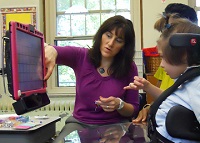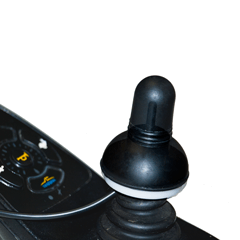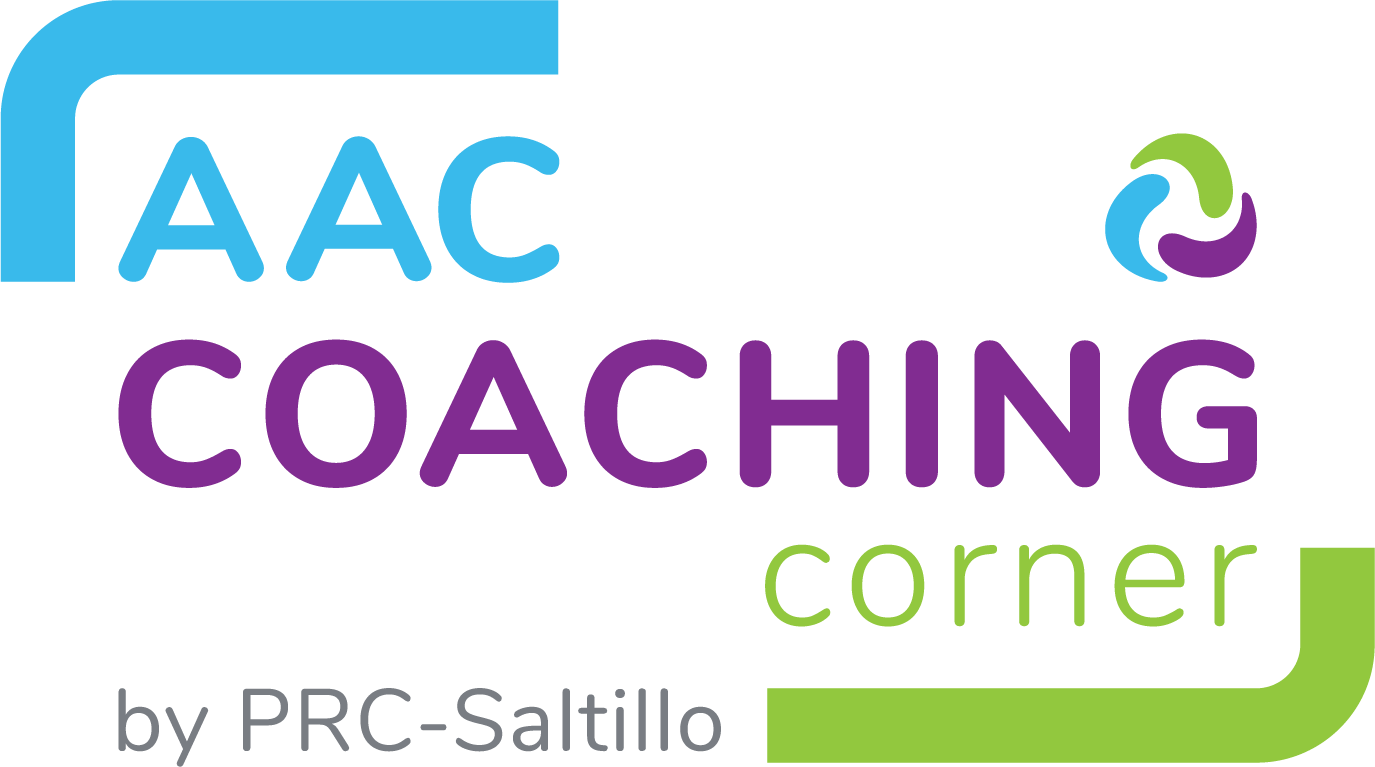Accessing Your AAC Device
Users can work with their AAC device using a variety of access methods:
- Eye gaze technology
- Infrared sensing (head tracking)
- Joystick and alternative mouse controls
- Single and multiple switch control
Multiple selection methods can enable children with even severe physical limitations to use and communicate with their AAC device.
Eye Gaze Technology
 Almost something out of science fiction, eye gaze is ideal for children and adults who needs hands-free and switch-free device access.
Almost something out of science fiction, eye gaze is ideal for children and adults who needs hands-free and switch-free device access.
It works by continually tracking the movement of the user’s iris – the center part of the eye – to give users full control of the device. Keys are “selected” by gazing for a specified period of time to generate speech.
Precise and accurate, eye gaze systems can be calibrated as needed for both children and adults, and works with most eyeglasses and contact lenses.
Easy to use and simple to set up, PRC's Look™ Eye Tracking System is the only system available where most users can make developer-grade adjustments themselves for maximum control and effectiveness.
Headpointing
 PRC's NuPoint® headpointing module is an effective access solution for those who have limited or no use of their hands.
PRC's NuPoint® headpointing module is an effective access solution for those who have limited or no use of their hands.
Using optical sensors, NuPoint tracks a small reflective dot on the user’s forehead, glasses or other convenient spot, allowing the user to control the device. Key activations are made by dwelling over the desired key. Additional movement settings, like vertical and horizontal controls, help customize control of the cursor to optimize the user’s accuracy and ease of use.
NuPoint:
- Requires no additional power or adaptors
- Plugs directly into a dedicated port, eliminating loose or exposed connecting wires
- Requires no special software
Joystick and Alternative Mouse Control
 When direct (touch) access isn’t possible, some users may opt to use a standard USB mouse or joystick.
When direct (touch) access isn’t possible, some users may opt to use a standard USB mouse or joystick.
Most standard USB mouse and joysticks work with PRC Accent® devices, though some extra equipment (available from PRC) may be required.
In addition, products such as the BJOY ring, available from PRC in either a wired and wireless option, has the added advantage of eliminating the need for multiple controllers.
Settings for an external mouse or joystick can be customized within the Accent software, according to an individual's need. Specific adjustments include:
- How long it takes your device to register a selected location
- How sensitive the movement of the cursor is to the movement of the joystick/mouse (both vertically and horizontally)
- Whether a switch should be used in conjunction with the mouse/joystick
- The appearance of the keys
Single and Multiple Switch Control
 PRC devices are compatible with a wide variety of switches that can be activated by a hand, knee, elbow, foot or other body part to control a device.
PRC devices are compatible with a wide variety of switches that can be activated by a hand, knee, elbow, foot or other body part to control a device.
Switch scanning allows the user to select the message by activating a switch at the moment the desired word, letter or symbol is highlighted.
Switches can be wired or wireless and adjusted independently to accommodate a broad spectrum of physical abilities.
We offer a wide variety of switches that can accommodate a range of motor abilities.
Types of scanning include:
- 1-switch scanning – an individual uses one switch that is activated (or released) when the desired key is highlighted.
- 2-switch scanning – an individual uses two switches at different access points. One switch generally "moves" the scan while the other switch "selects" the key.
Copyright © PRC-Saltillo. All Rights Reserved.

















 Almost something out of science fiction, eye gaze is ideal for children and adults who needs hands-free and switch-free device access.
Almost something out of science fiction, eye gaze is ideal for children and adults who needs hands-free and switch-free device access. PRC's NuPoint® headpointing module is an effective access solution for those who have limited or no use of their hands.
PRC's NuPoint® headpointing module is an effective access solution for those who have limited or no use of their hands. When direct (touch) access isn’t possible, some users may opt to use a standard USB mouse or joystick.
When direct (touch) access isn’t possible, some users may opt to use a standard USB mouse or joystick. PRC devices are compatible with a wide variety of switches that can be activated by a hand, knee, elbow, foot or other body part to control a device.
PRC devices are compatible with a wide variety of switches that can be activated by a hand, knee, elbow, foot or other body part to control a device.